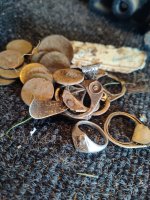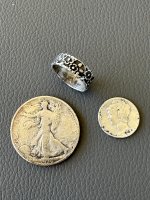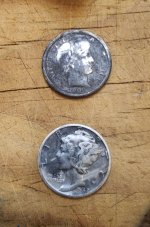ryaan21
Sr. Member
- Apr 17, 2007
- 435
- 152
- Detector(s) used
- Garrett GTA 1000 Garrett GTAx 550, Teknetics Delta 4000, Teknetics T2, Teknetics Omega 8000, Garrett AT Pro, Whites Coinmaster GT, Fisher CZ70 Pro
- Primary Interest:
- All Treasure Hunting
I have noticed that with my ground when I happen to pass over small rust, a nail, bottle cap, I get a good repeatable tone if i go slow on the sweep. If I speed it up a tad, I get a "junk" tone. Slow back down, good tone. The numbers bounce with either speed as well. Not a big deal, but may shed a little insight to those using this great detector.





